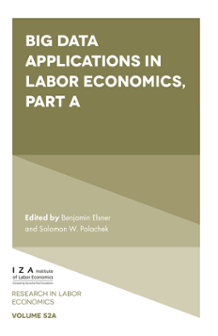
Lo más reciente
We examine the effect of increasing online job vacancies on labor market efficiency in the context of a developing country. The findings suggest that the rise in online job vacancies has enhanced labor market efficiency by improving the match between job seekers and employers. This hypothesis is supported by an increase in the hiring and net employment growth rates. The study shows a reduction in the vacancy rate in segments of the labor market, with a significant share of vacancies posted online, after implementing a policy requiring firms to report vacancies to the Public Employment Service in Colombia. The results from a Beveridge Curve estimation imply a 1.2 percentage point (pp) decrease in the vacancy rate for a given unemployment rate and increments in the hiring and employment growth rates of 1.1pp and 1.3pp after the policy change, respectively. These results support the notion that policies to reduce information barriers can improve labor market performance.

 Carlos Ospinoe,
Carlos Ospinoe,